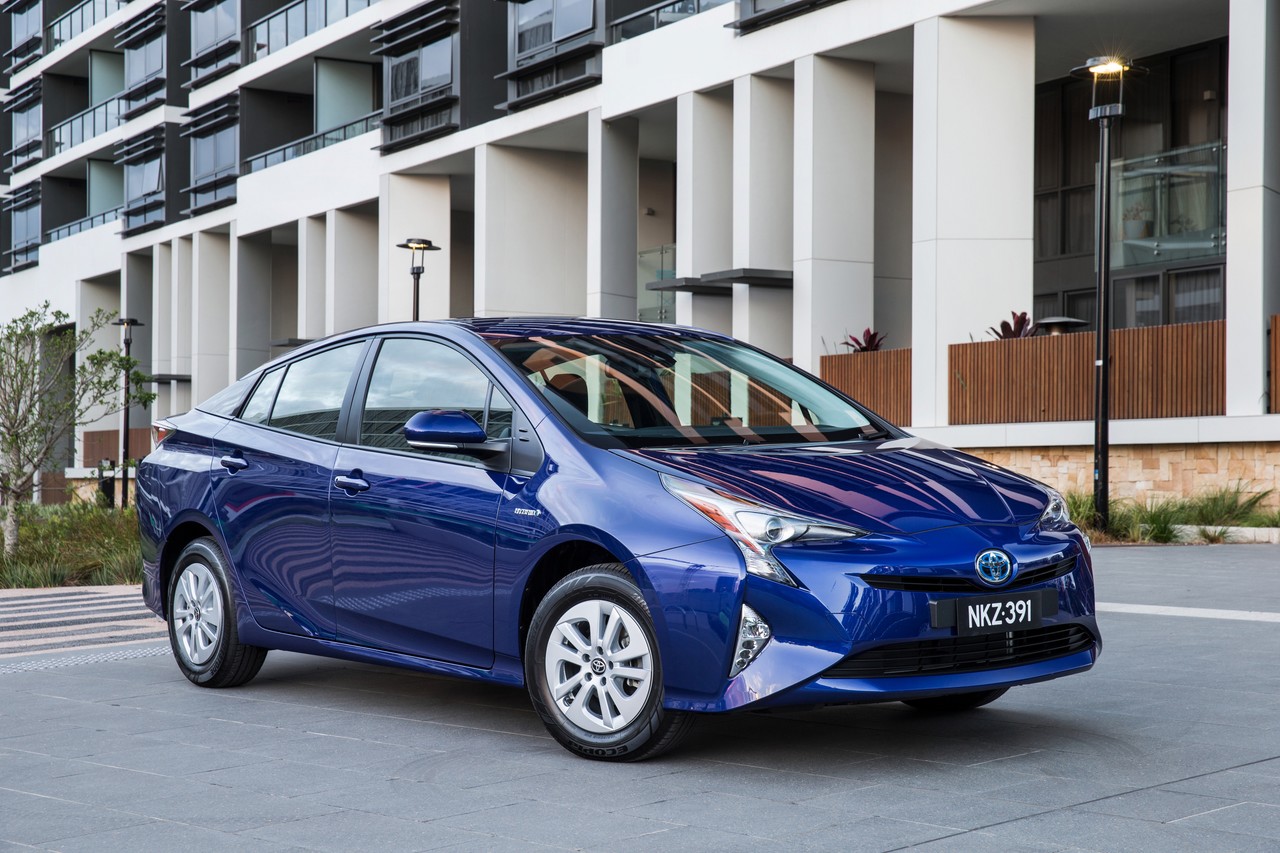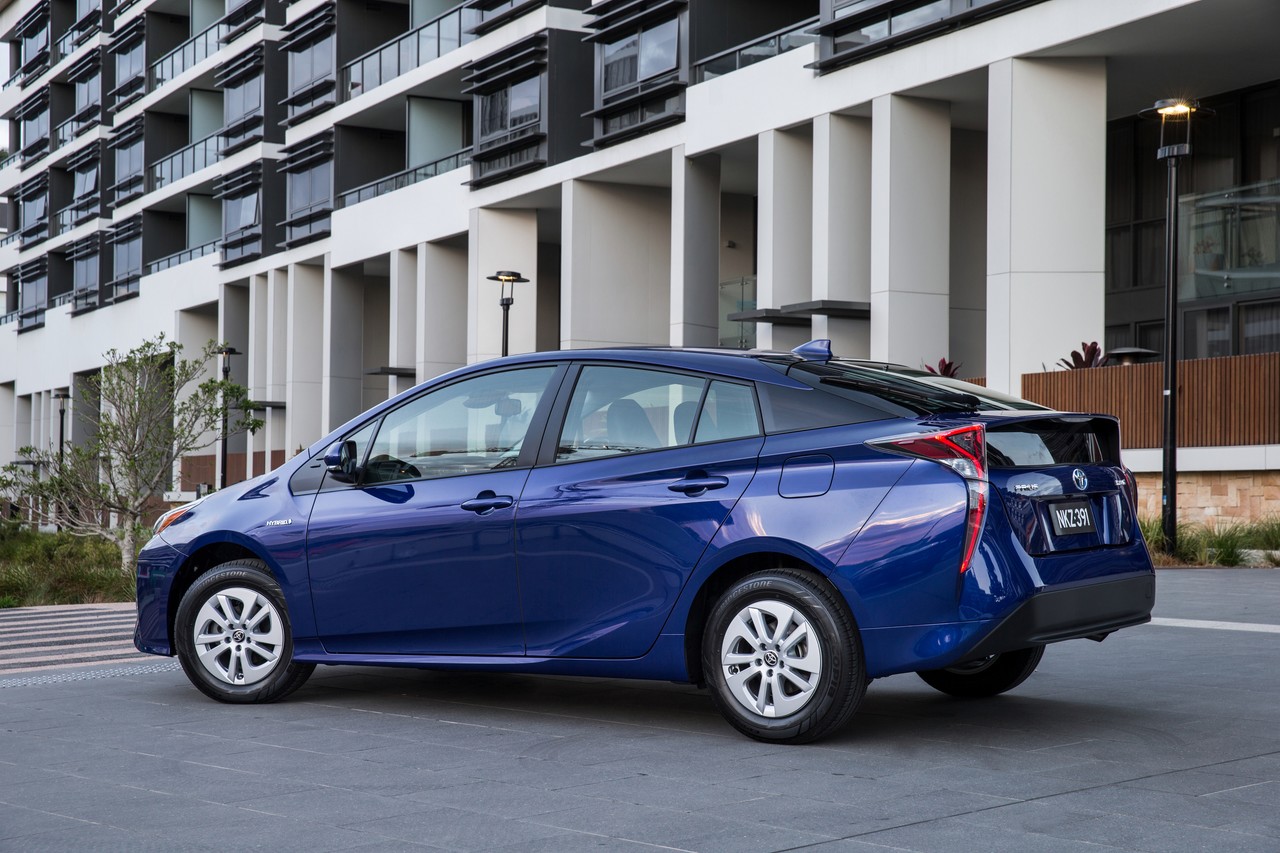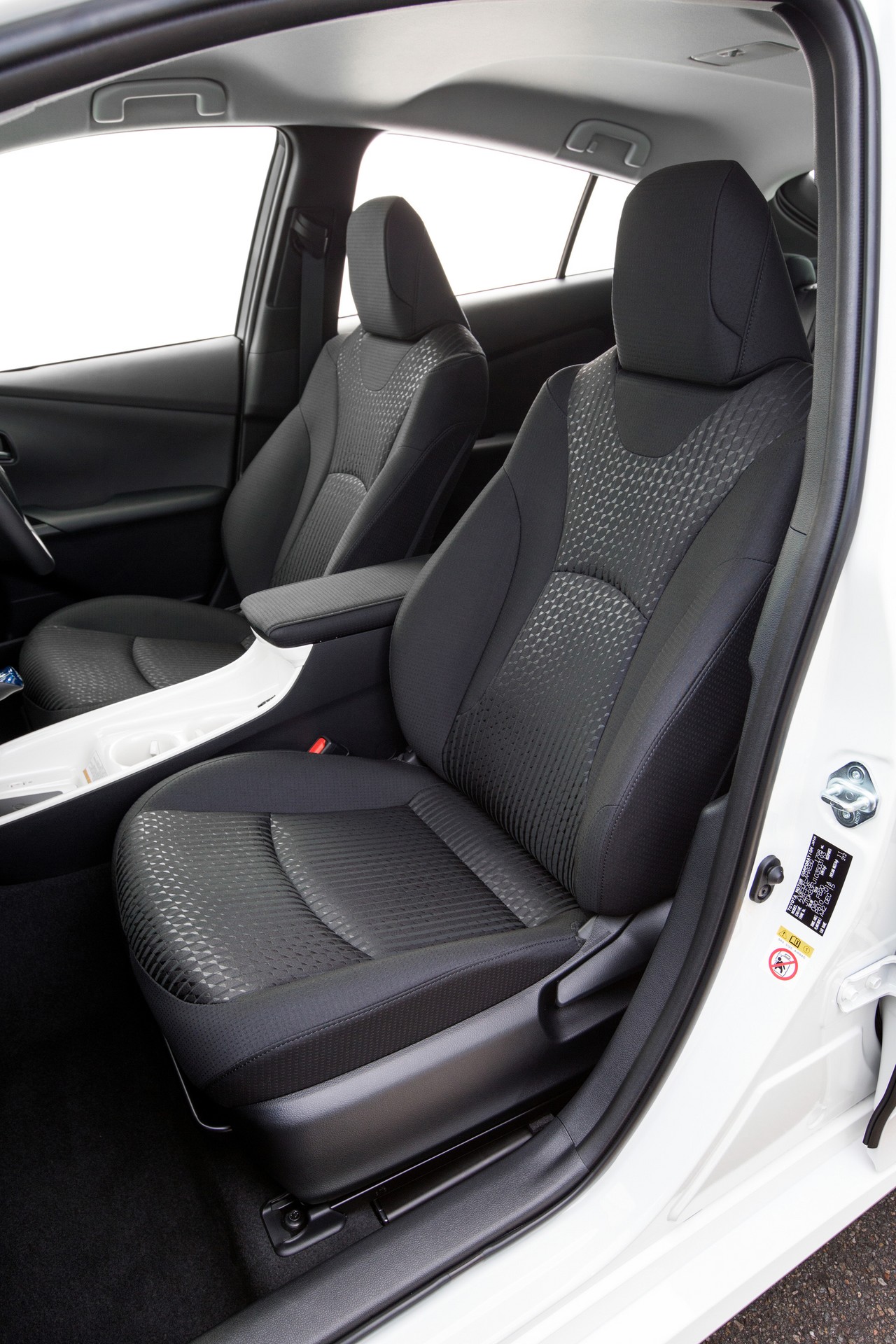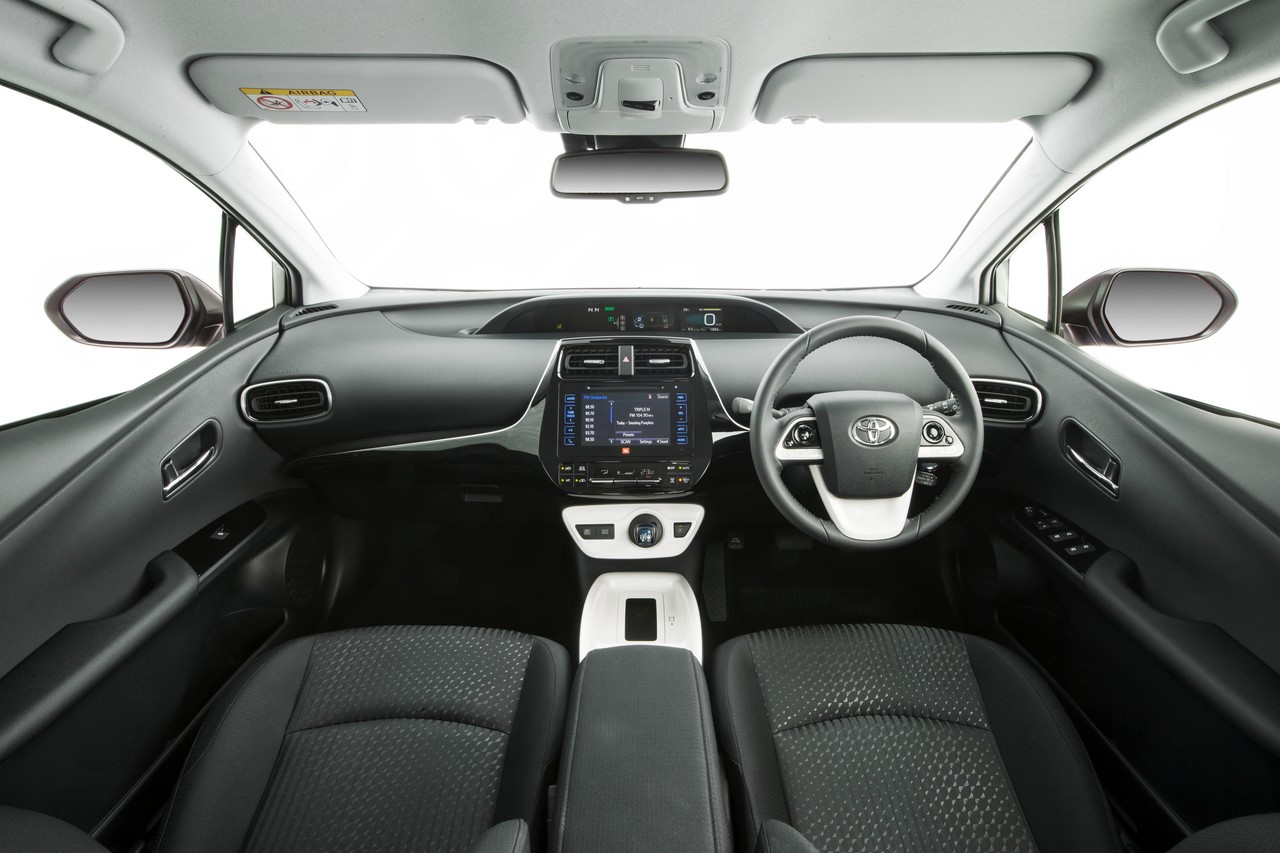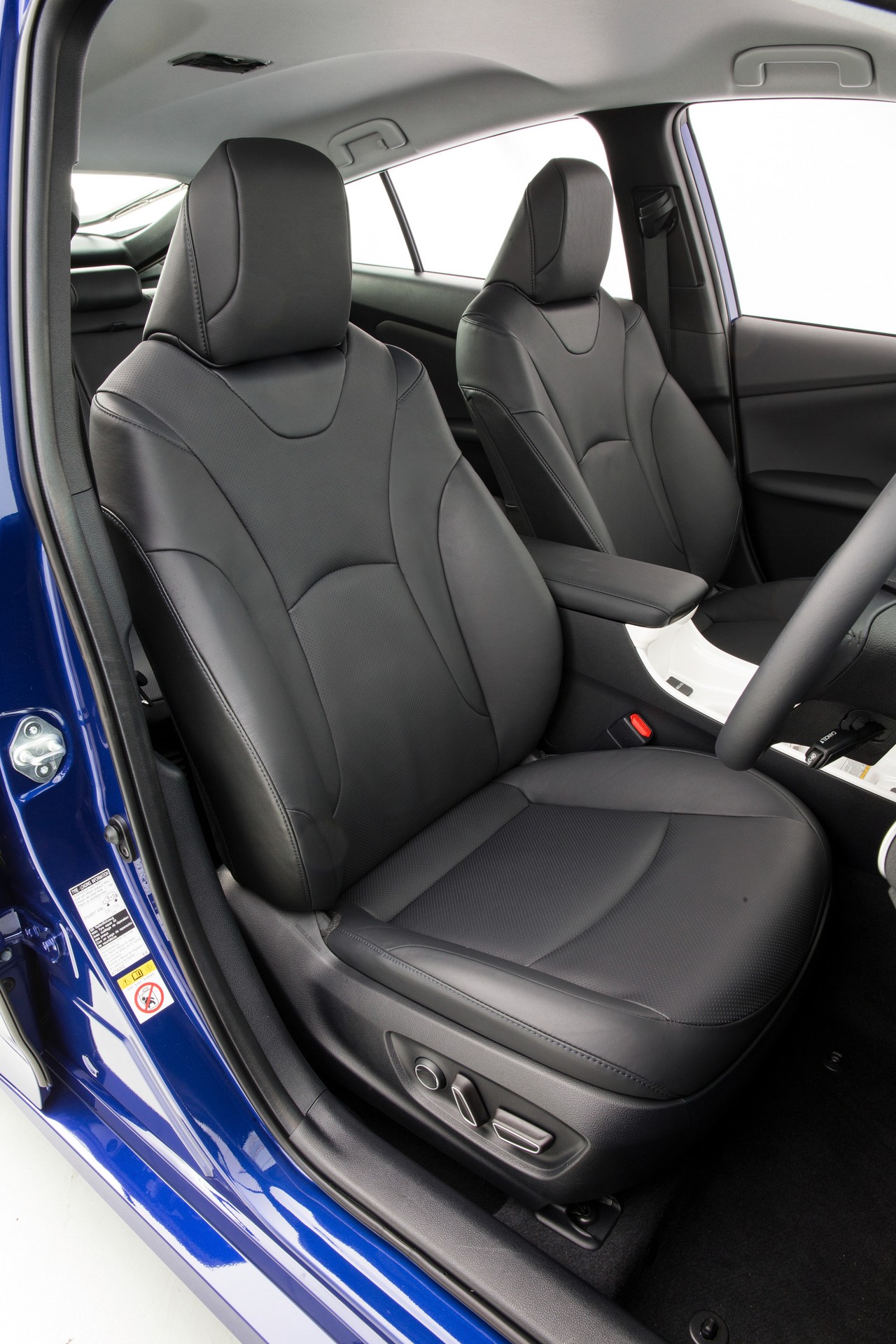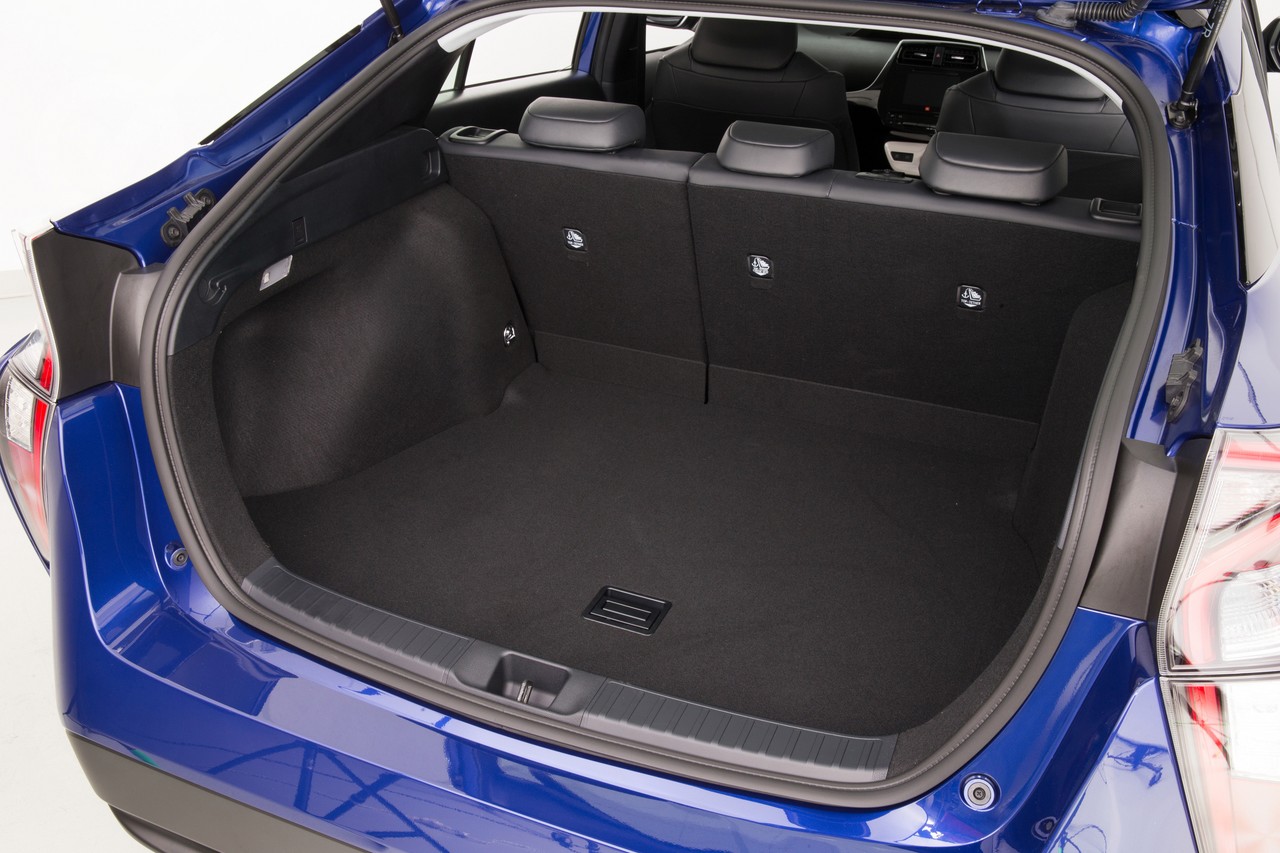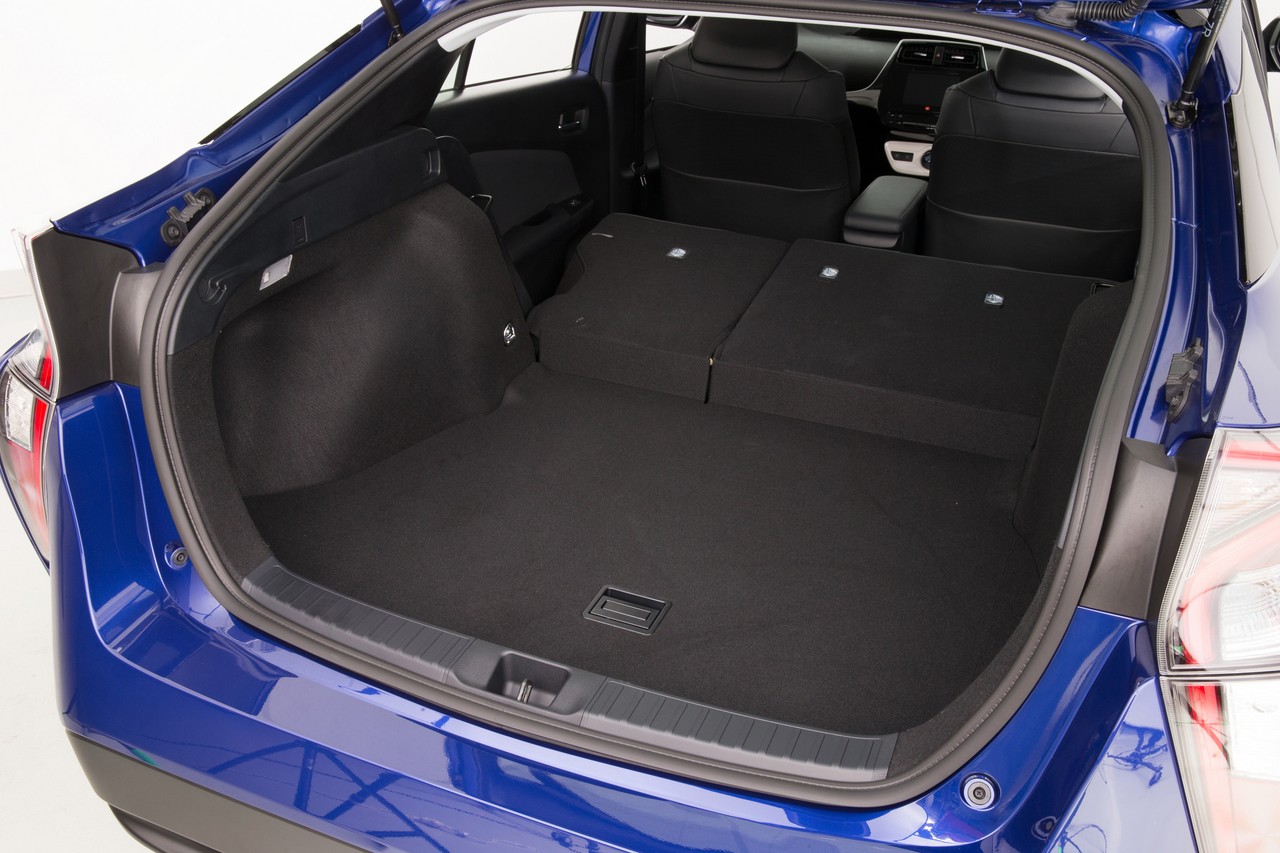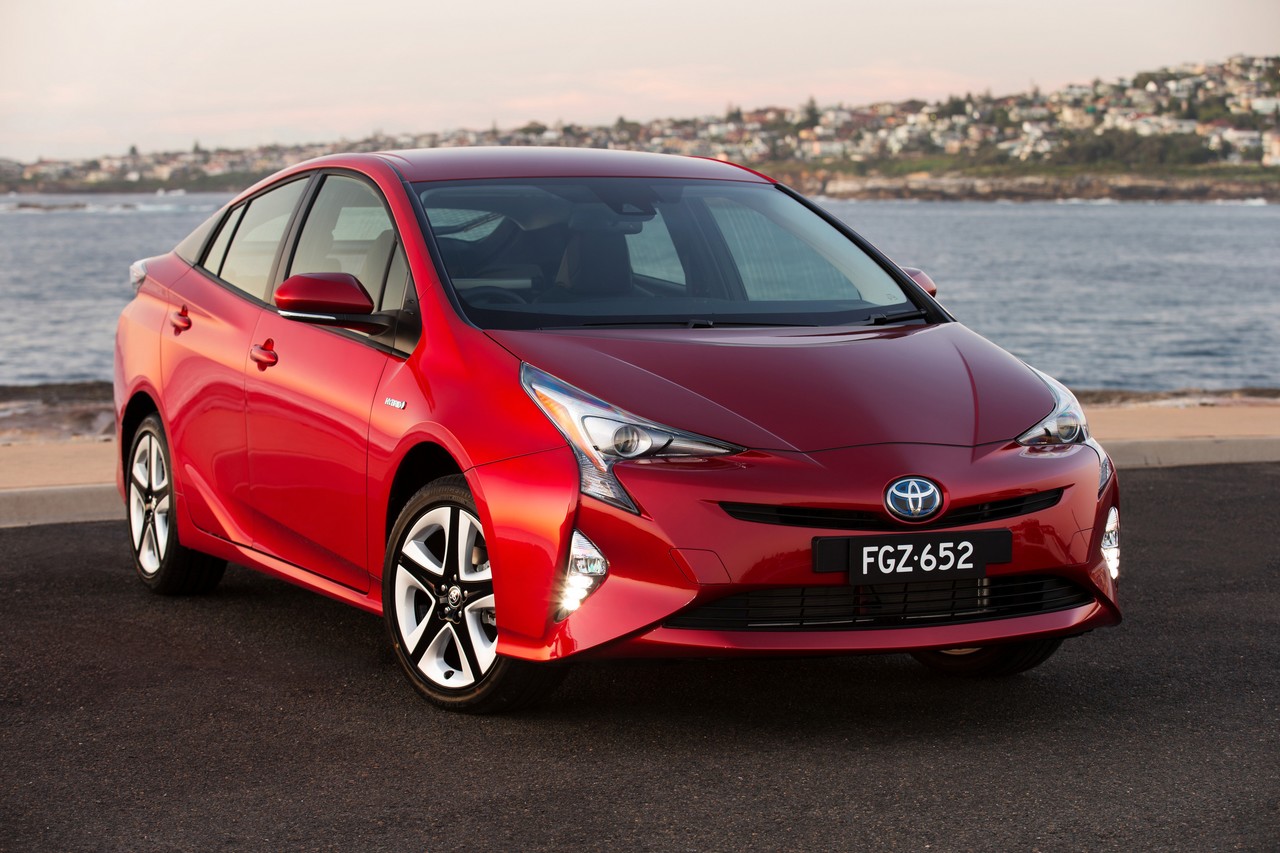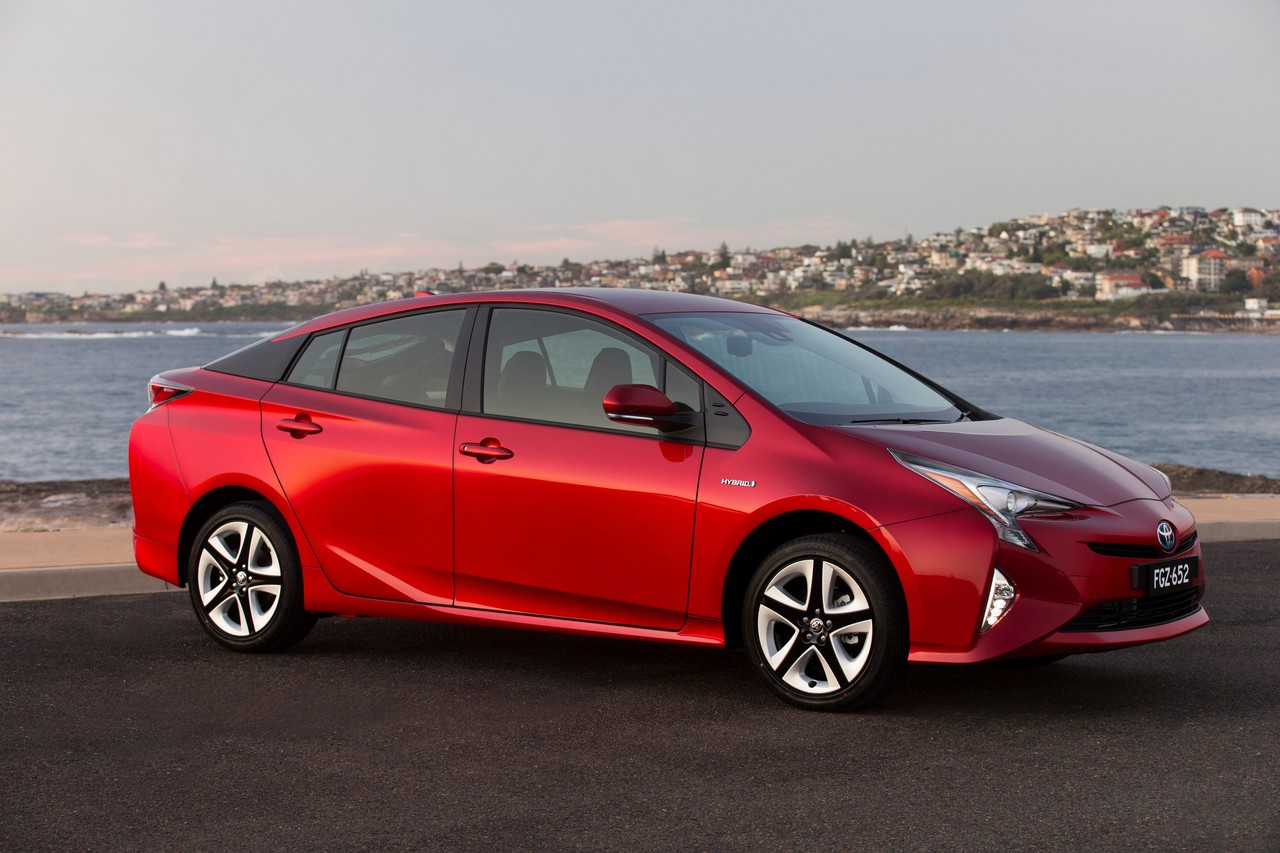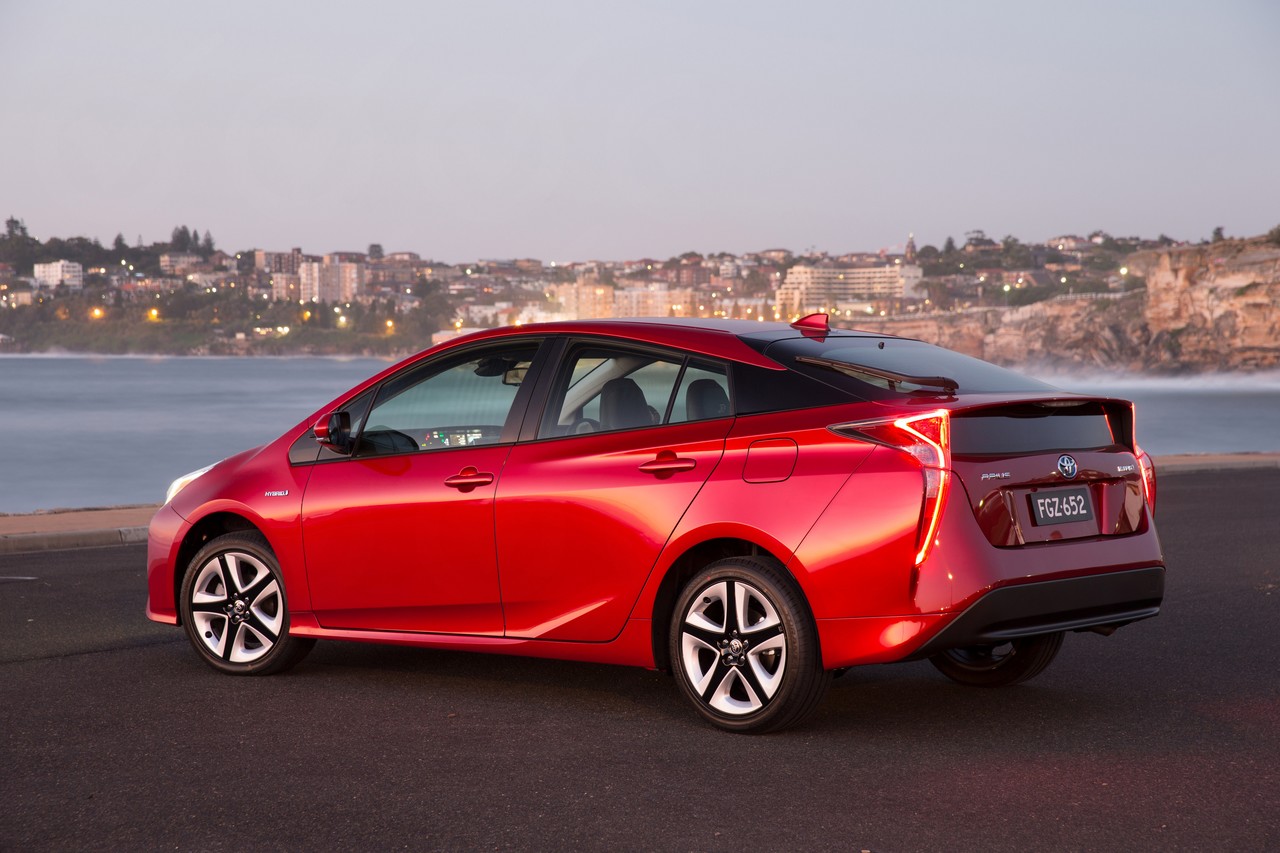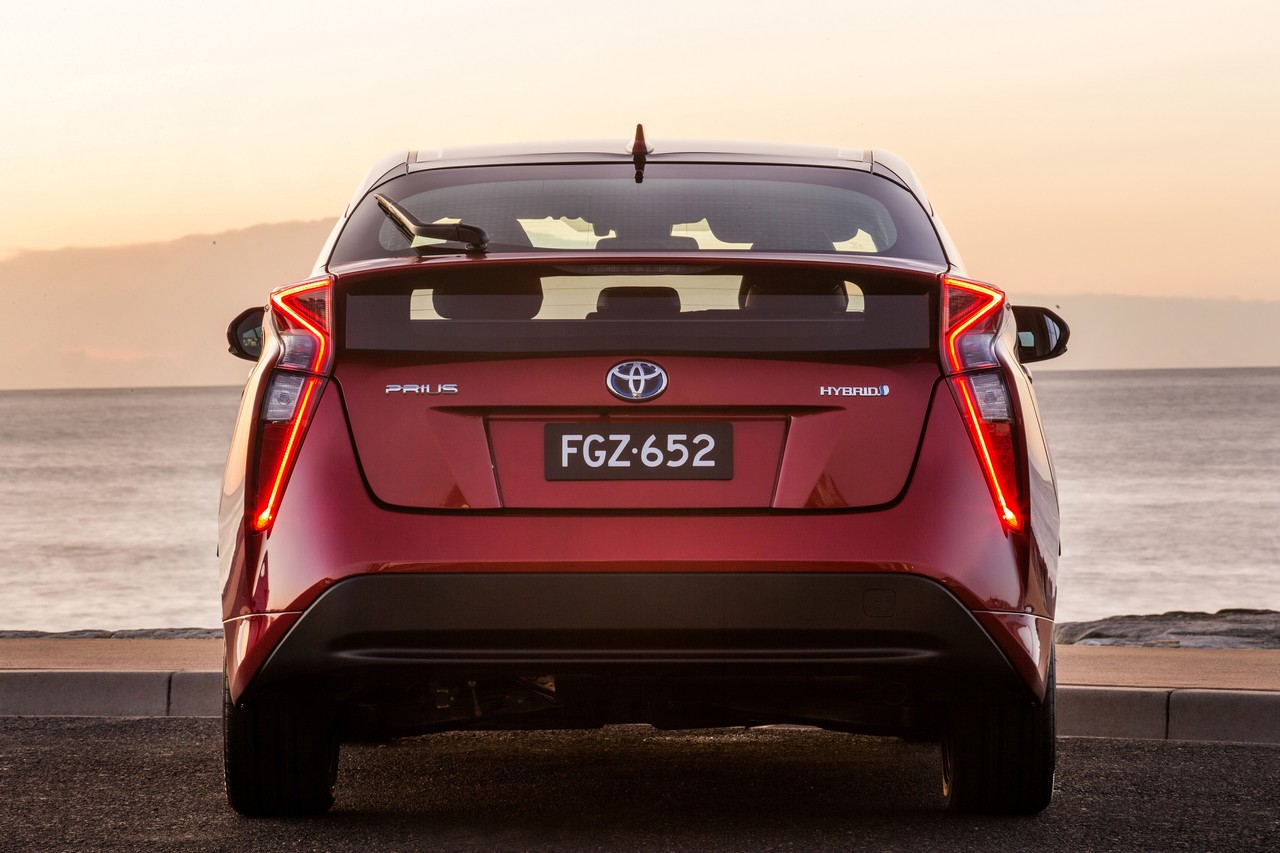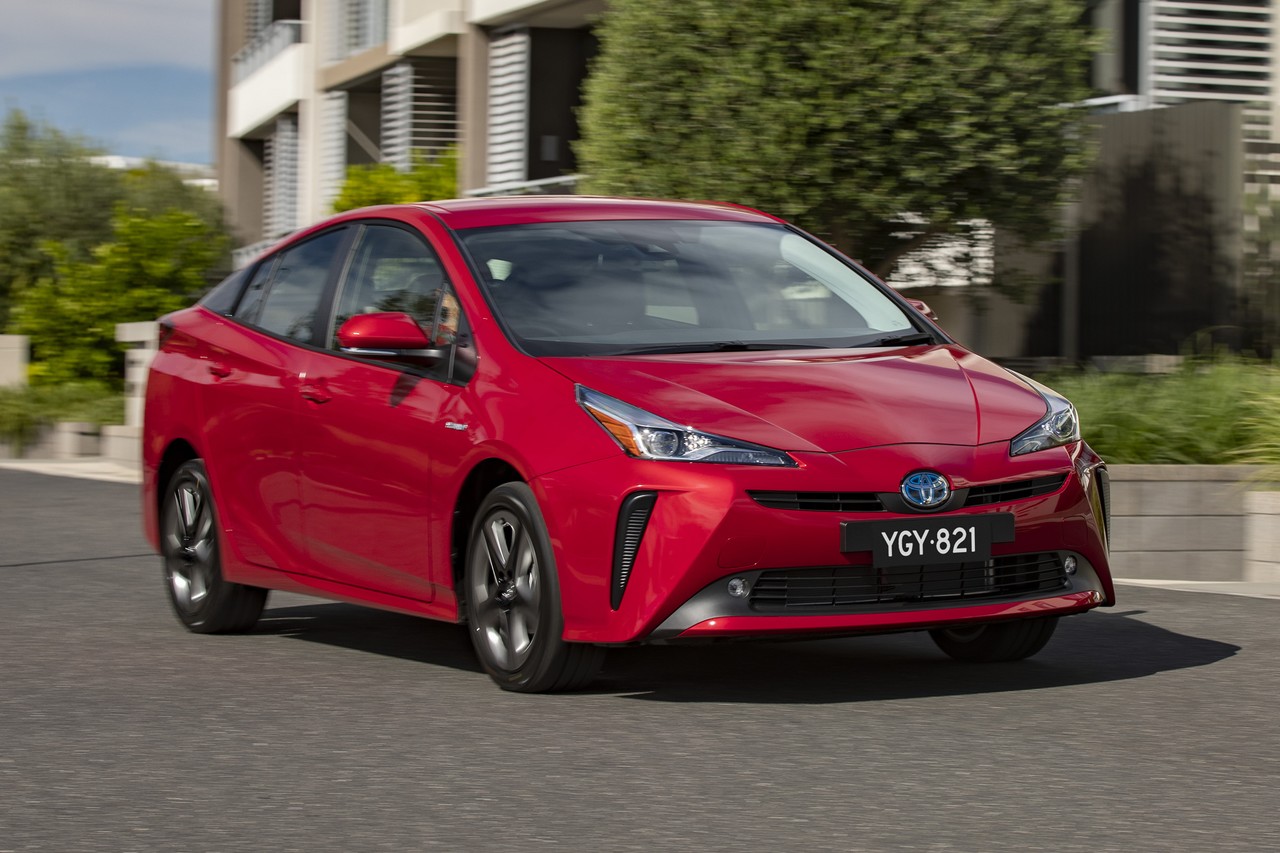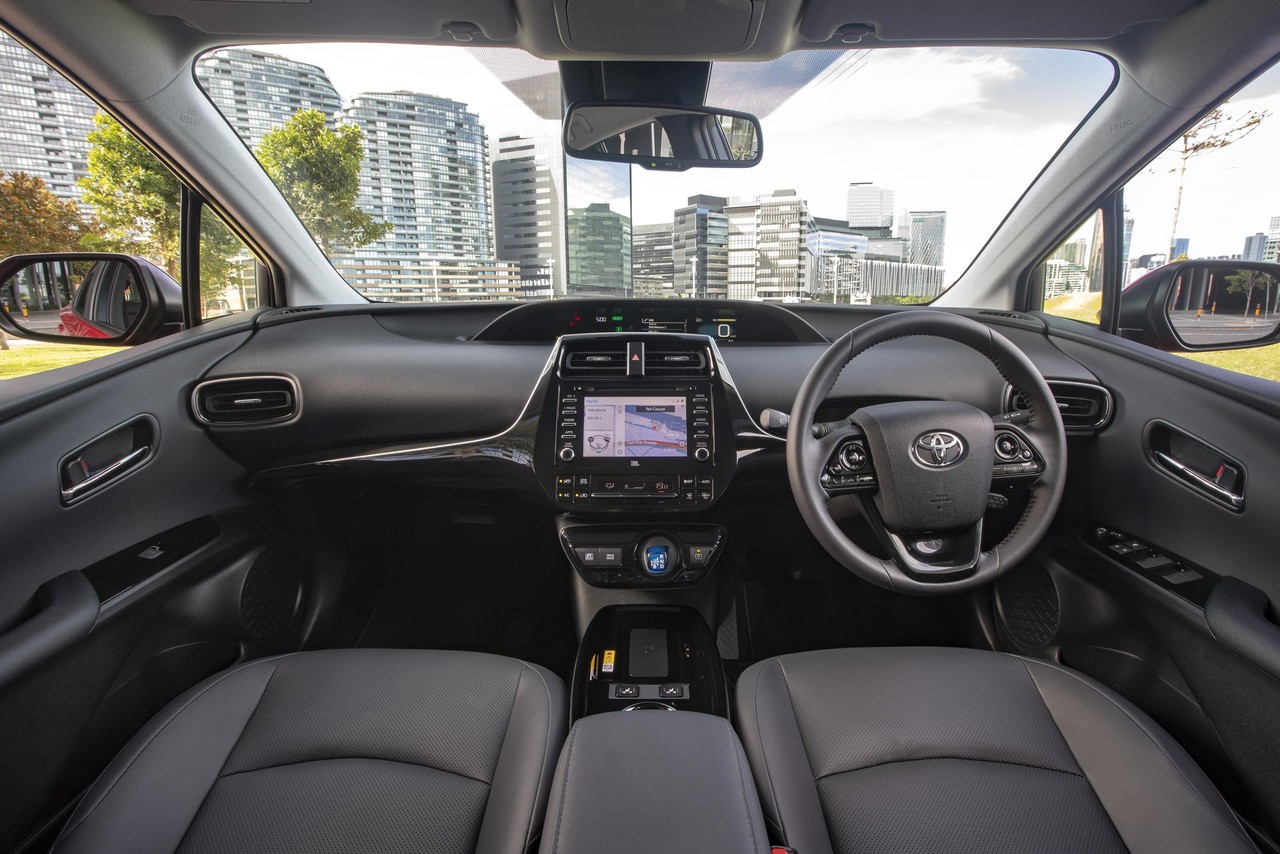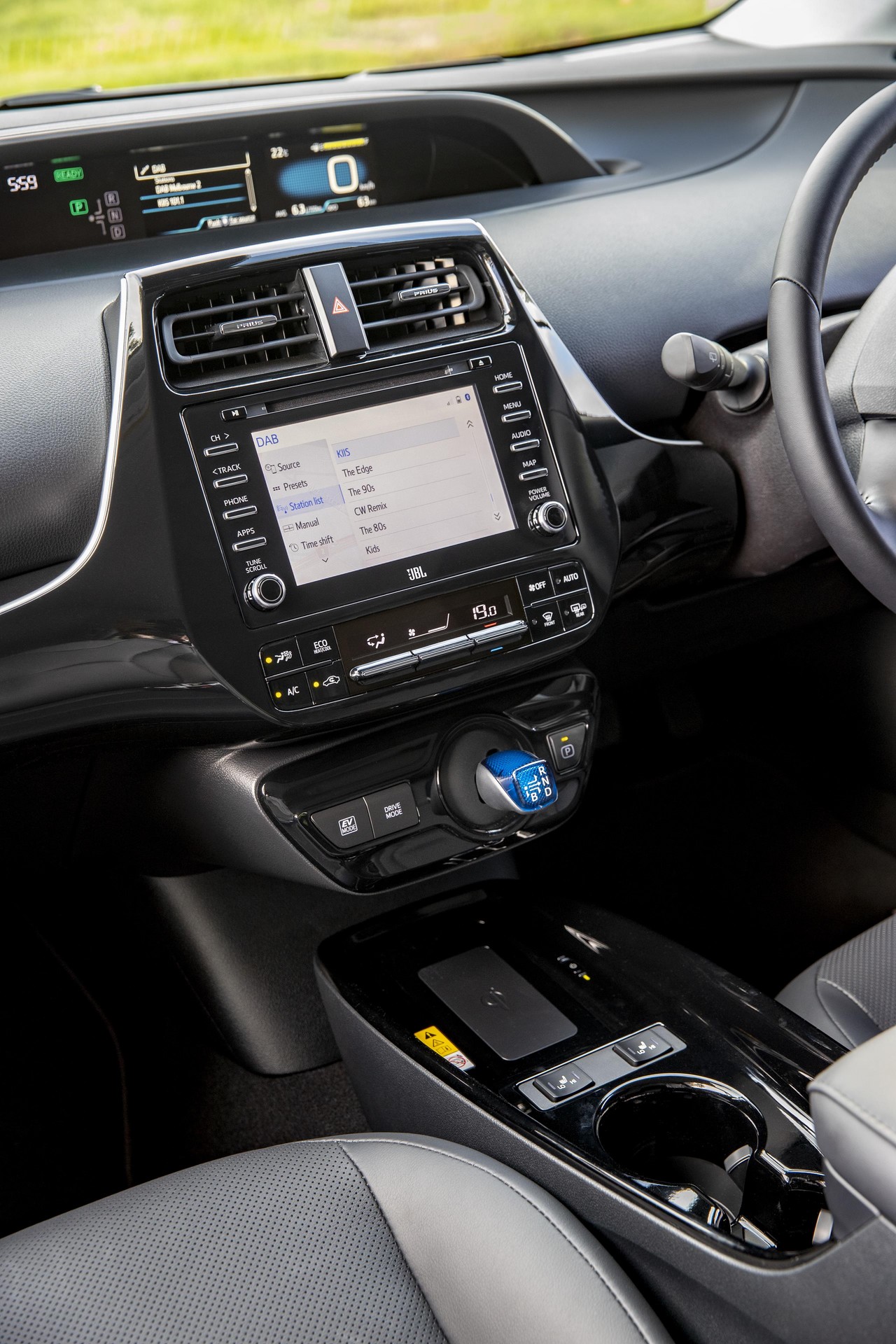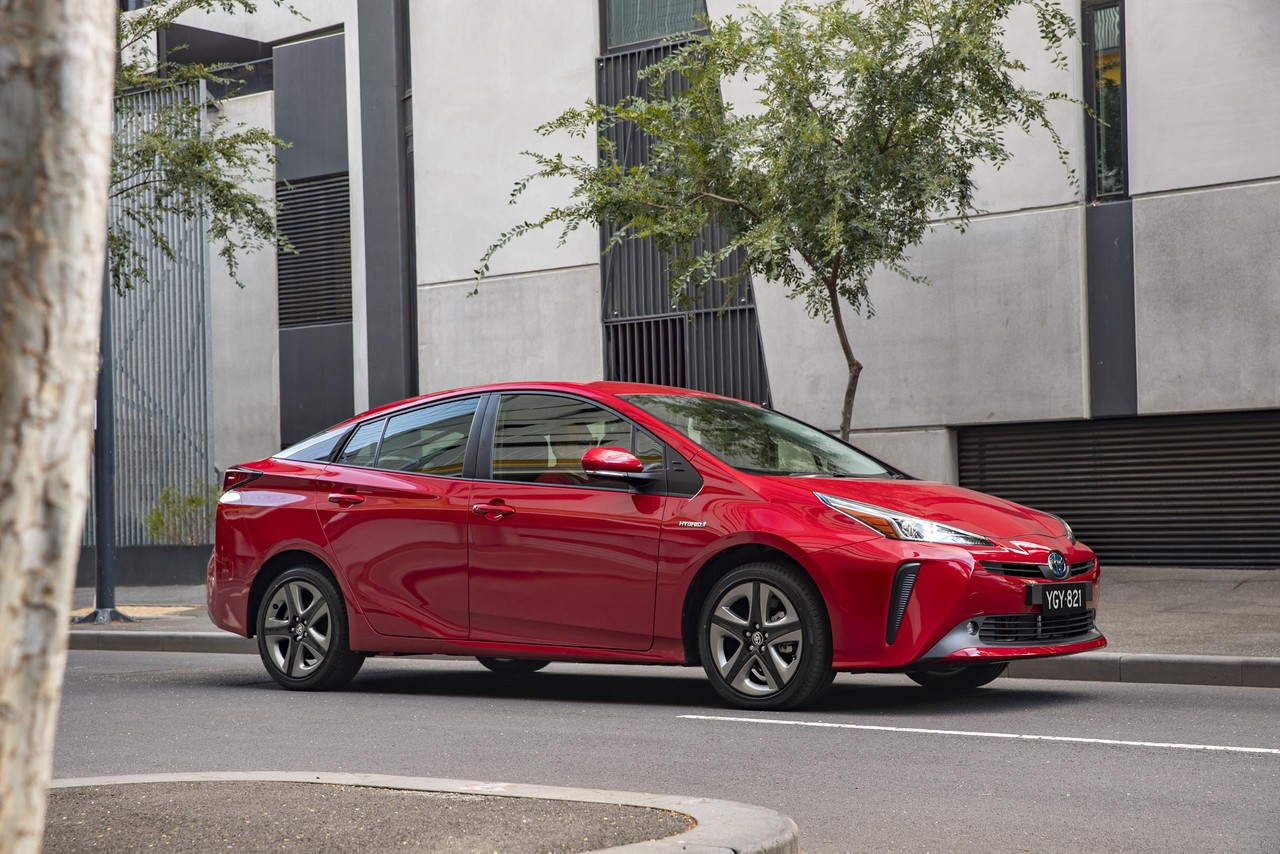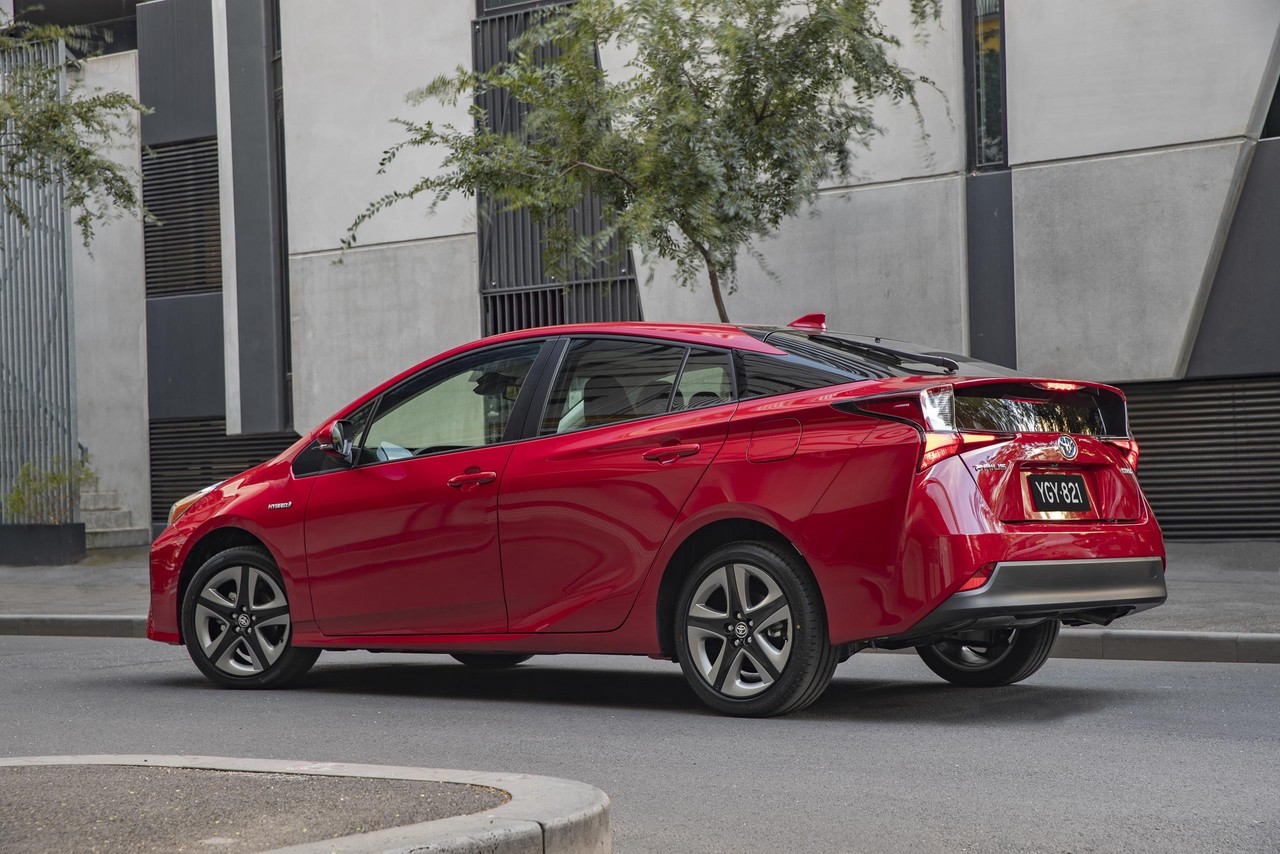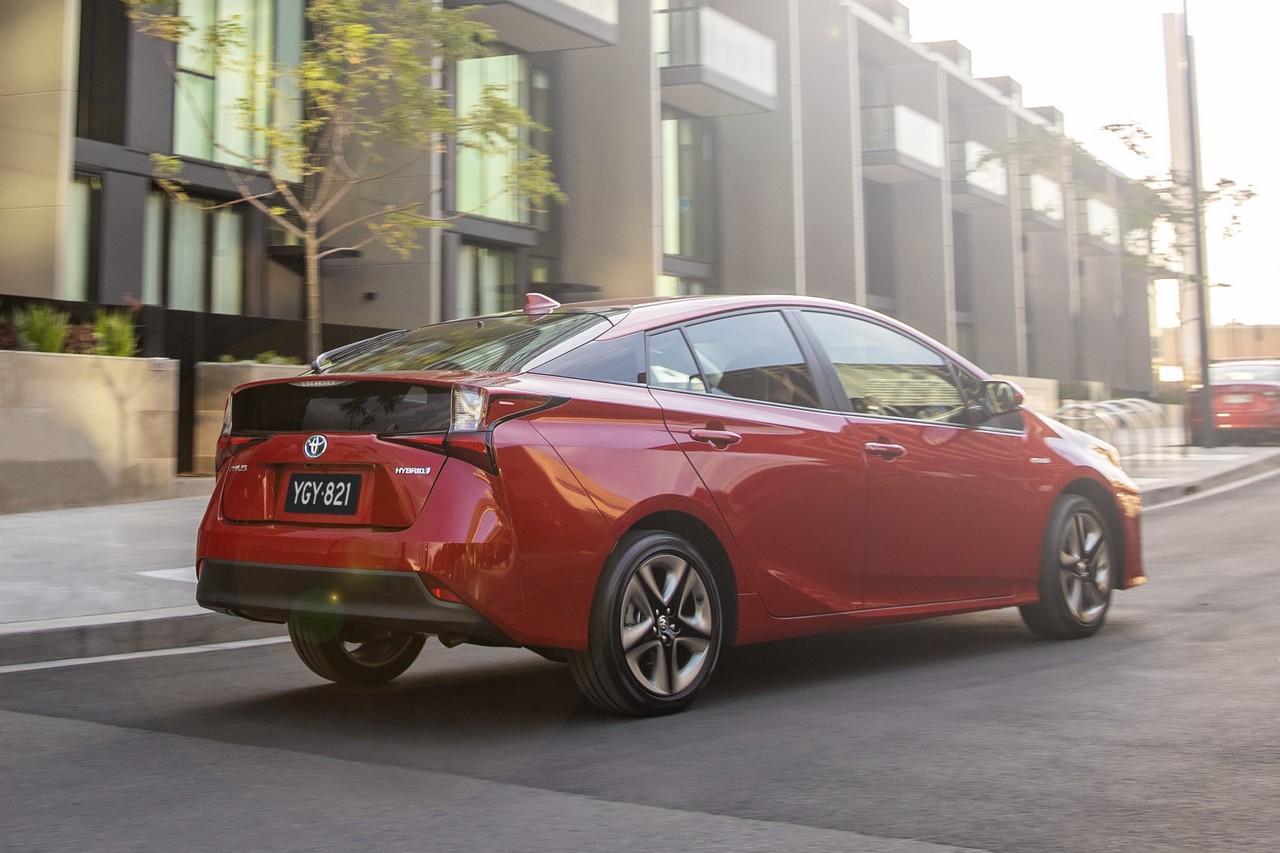
- Remarkable fuel efficiency
- Active safety technologies fitted as standard
- Quiet and refined interior
- Accomplished ride and handling
- Ungainly styling
- Limited electric-only range
- A-pillars impair visibility
- Outright performance is slower than XW30 Prius
- Satellite navigation not standard for standard Prius
Review: Toyota XW50.I Prius (2016-19)
Overview
Released in Australia in February 2016, the Toyota XW50 Prius was a five-door hatchback with a hybrid powertrain. Manufactured in Japan, the front-wheel drive XW50 Prius was powered by a 1.8-litre Atkinson-cycle petrol engine that was mated to a continuously variable transmission (CVT).
2ZR-FXE engine
The 1798 cc 2ZR-FXE engine had a die-cast aluminium alloy block, an alloy cylinder head, multi-point fuel injection, double overhead camshafts, four valves per cylinder, Toyota’s ‘Variable Valve Timing with intelligence’ (VVT-i), cooled exhaust gas recirculation, direct ignition and a compression ratio of 13.0:1. As an Atkinson cycle engine, the 2ZR-FXE had a higher expansion ratio than a conventional Otto cycle engine, making the expansion stroke longer than the compression stroke.
For the XW50 Prius, the following measures were introduced:
- Thin-section, resin-coated connecting rod bearings and a low-friction camshaft chain;
- New piston and air intake ports for greater tumble swirl inside the cylinder to create a more homogeneous air:fuel mix;
- Conical ‘beehive’ valve springs to reduce valvetrain load;
- Low-viscosity oil to reduce friction between moving parts;
- An improved exhaust gas recirculation (EGR) cooler which further reduced the temperature of gases for better knock suppression and so that ignition timing could be advanced for greater thermal efficiency; and,
- A dual cooling system which reduced coolant flow volume for faster warm-up after cold starts and used spent exhaust gases to warm up the coolant.
According to Toyota, the 2ZR-FXE engine for the Toyota XW50 Prius achieved a thermal efficiency of 40 per cent, the highest in the world.
The 2ZR-FXE engine ran on 91 RON unleaded petrol and, over the combined ADR 81/02 test cycle, fuel consumption for the Toyota XW50 Prius was 3.4 litres per 100 km.
| Details | Trans. | Peak power | Peak torque | |
|---|---|---|---|---|
| Petrol engine | 1.8-litre 2ZR-FXE Atkinson cycle petrol I4 | CVT | 72 kW at 5200 rpm | 142 Nm at 3600 rpm |
| Permanent magnet AC electric motor | 600-volt nickel-metal hydride battery | 53 kW | 163 Nm | |
| Combined | 90 kW | N/A |
Hybrid powertrain
The transaxle of the Toyota XW50 Prius housed four components:
- Motor-generator #1 (MG1): served primarily as a generator, converting surplus power from the petrol engine into electricity which could be stored in the hybrid battery. MG1 also served as the engine’s starter motor;
- Motor-generator #2 (MG2): the electric drive motor which also acted as a generator when the car was in regenerative braking mode. MG2 powered the car from start-up, at low speeds and in EV (electric vehicle) mode; it was also the sole propulsion method when the vehicle was in reverse;
- A single planetary gear; and,
- A reduction gear to the final drive.
For the XW50 Prius, the transaxle and hybrid motor were redesigned to reduce their mass. Specifically, the transaxle was made 59 mm shorter by locating the drive motor and electric motor/generator over multiple axles (rather than the previous single axle). Furthermore, the planetary gear arrangement in the reduction gear was replaced with parallel gears to reduce mechanical losses.
For the XW50 Prius, the Power Control Unit (PCU) was 33 per cent smaller, six per cent lighter and achieved a 20 per cent reduction in electrical losses. The PCU housed the inverter/voltage booster, a DC/DC converter for auxiliary power and the electronic control for the motor-generators. Instead of a belt-driven alternator, the XW50 Prius used a DC/DC converter to recharge the 12-volt auxiliary battery by drawing power from the hybrid battery.
Body and dimensions
Te Toyota XW50 Prius was underpinned by Toyota’s GA-C platform, a derivative of the ‘Toyota New Generation Architecture’ (TNGA) that will underpin at least 50 per cent of Toyota vehicles by 2021. The body of the Toyota XW50 Prius achieved a 60 per cent increase in torsional rigidity relative to the XW30 Prius due to:
- The use of a ring-shaped, cyclical frame;
- A higher proportion of high-tensile strength steel;
- Greater use of high-strength (980 MPa and above) hot-stamp materials, increasing from three (3) per cent to nineteen (19) per cent;
- Laser screw welding and an increased number of weld points; and,
- The use of structural body adhesives to bond areas of the lower door pillars and rear door opening.
Compared to the Toyota XW30 Prius , the Toyota XW50 Prius was 60 mm longer (at 4540 mm) and 15 mm wider (1760 mm), though height (1490 mm) and wheelbase length (2700 mm) were unchanged. Kerb weight ranged from 1375 kg to 1400 kg, while the XW50 Prius had a drag coefficient of 0.24 Cd (compared to 0.25 Cd for the XW30 Prius).
The Toyota XW50 Prius had a more compact nickel-metal hydride (NiMH) battery that was positioned beneath the rear seat for greater luggage space and contributed to a 24 mm lower centre of gravity. The Toyota Prius had a luggage space of 457 litres; the Prius i-Tech, however, had a luggage space of 502 litres since it had a tyre repair kit rather than a spare wheel.
Suspension
The Toyota XW50 Prius had MacPherson strut front suspension which utilised new low-friction damper struts that had a piston valve that was able to generate damping force at very low speeds and provided greater improved body control at higher velocities. To minimise body roll, the anti-roll bar was ball-joint mounted and had fluorine-resin coating on sliding parts of the mount bushings to minimise friction.
Rather than the torsion beam rear axle of its predecessor, the Toyota XW50 Prius had double wishbone rear suspension which used wide-mounted, forward-inclined damping struts and compact coil springs.
Steering
The Toyota XW50 Prius had rack-and-pinion steering with electric power assistance.
The Prius and Prius i-Tech had steering ratios of 13.2:1 and 13.4:1, respectively (compared to 14.6:1 for the XW30 Prius) and the steering wheel required 2.8 turns from lock to lock. The Toyota Prius and Prius i-Tech had turning circles of 10.2 and 10.8 metres, respectively.
For the XW50 Prius, a high-rigidity intermediate steering shaft was introduced and steering column rigidity was increased for greater feedback. According to Toyota, on-centre steering feel was improved by adopting a worm-shaft elastic support and new control logic. The steering also introduced Toyota’s ‘variable damping control’ which provided more progressive assistance as the steering wheel was turned.
Safety equipment
Standard safety equipment for the Toyota XW50 Prius included dual front airbags, a driver’ s knee airbag, front side airbags, full-length curtain airbags (i.e. for front and rear occupants), ABS, brake assist, electronic brake force distribution, emergency braking lights, electronic stability control, traction control, active front seat head restraints and front seatbelts with pre-tensioners and load limiters.
As standard, the Toyota XW50 Prius was fitted with a monocular camera that was mounted on the windscreen and a millimetre-wave radar sensor that was mounted behind the front grille to provide the following safety technologies:
- Pre-Collision Safety System (PCSS): active at speeds above 10 km/h, the PCSS monitored the road ahead for potential collisions. If there was a risk of a collision, the driver would be warned via a buzzer and a visual alert in the multi-information display. Simultaneously, the Brake Assist function would prepare to provide extra braking force when the brake pedal was applied. If the PCSS determined that the risk of a collision was ‘extremely high’, the brakes would be applied automatically (i.e. autonomous emergency braking);
- All-Speed Active Cruise Control (ACC): operating across the vehicle’s full speed range, ACC could maintain a safe distance from the vehicle ahead by braking until stationary and accelerating up to the maximum cruising speed set by the driver;
- Lane Departure Alert (LDA) with steering input: monitored the vehicle’s position within lane markings and if it detected that the Prius was about to diverge from its lane without the indicator having been applied, a buzzer would sound and a visual alert would appear on the multi-information display. If the Prius continued to move outside the lane, steering force would be applied to assist the driver in returning the vehicle to its lane; and,
- Automatic High Beam (AHB) headlights: could detect the lights of oncoming vehicles and automatically switch the headlights to low beam to avoid dazzling other road users. Once the other vehicles had passed, the headlights would switch back to high beam for better visibility.
The Toyota Prius i-Tech was further equipped with:
- Blind Spot Monitor: used radar sensors mounted at the rear corners of the vehicle to detect vehicles in adjacent lanes. If a vehicle was detected in the driver’s blind spot, the driver would be alerted by illumination of the LED warning indicators in the door mirrors on the side of that vehicle. If the driver activated the turn indicators, the LEDs would flash rapidly; and,
- Rear Cross Traffic Alert: used the same radar sensors to monitor approaching traffic as the driver reversed out of a parking space and warn the driver if vehicles were detected.
Brakes
The Toyota XW50 Prius had 255 mm by 25 mm ventilated front brake discs and 259 mm by 9 mm solid rear discs.
Euro NCAP testing
In Euro NCAP testing , the Toyota XW50 Prius received a five star rating which included a 92 per cent adult occupant protection rating and an 82 per cent child occupant protection rating. In the frontal offset test, protection of the driver’s head, thighs and feet were rated as good, but lower leg protection was rated as adequate and chest protection as marginal. Maximum points were awarded in the side impact test; in the more severe pole test, however, chest protection was rated as weak.
Features: Toyota XW50 Prius
Standard features for the Toyota XW50 Prius included 15 x 6.5J alloy wheels with 195/65 R15 tyres, a JBL audio system with ten speakers and GreenEdge technology, Toyota Link multimedia system with a seven-inch touchscreen, Bluetooth mobile phone connectivity and audio streaming, wireless phone charger for Qi-supported devices, a power adjustable driver’s seat lumbar support, climate control air conditioning, bi-LED headlights, front fog lamps, LED daytime running lights, a rear view camera with dynamic guidelines, leather steering wheel, remote central locking with proximity key (i.e. ‘smart entry’), power adjustable mirrors with auto-fold function, power windows, a height and reach adjustable steering wheel, an electro-chromatic rear view mirror, push-button start, a trip computer and an immobiliser.
As standard, the XW50 Prius featured a full colour Head-Up Display (HUD) which could be controlled via buttons on the steering wheel and projected information such as speed, fuel economy and satellite navigation directions to the windscreen (where navigation was fitted).
The air conditioning system for the XW50 Prius introduced Toyota’s ‘S-flow’ (Energy Saving Air-flow) system which, if the front passenger seat was empty, would focus the air conditioning on the driver only for greater efficiency.
Features: XW50 Prius i-Tech
The Toyota Prius i-Tech was further equipped with 17 x 7.0J alloy wheels with resin inserts to reduce weight, 215/45 R17 tyres, a digital radio tuner (DAB+), satellite navigation, leather-accented seats, an eight-way power adjustable driver’s seat and heated front seats.
Brochure
Related links
Review: Toyota XW50.II Prius (2019-22)
Overview
The Toyota XW50.II Prius was released in Australia in March 2019. Visually, the XW50.II Prius could be identified by its slim bi-LED headlamps, a new front bumper which was more integrated with the front quarter panels, a lower front air intake, new rear combination lamps and alloy wheel designs.
Inside, the Toyota XW50.II Prius featured an updated seven-inch touchscreen (which could be operated with ‘pinch’ and ‘flick’ gesture controls) and a revised centre console. The standard XW50.II Prius had new black cloth upholstery, while the Prius i-Tech continued to have leather-accented seats.
| Details | Trans. | Peak power | Peak torque | |
|---|---|---|---|---|
| Petrol engine | 1.8-litre 2ZR-FXE Atkinson cycle petrol I4 | CVT | 72 kW at 5200 rpm | 142 Nm at 3600 rpm |
| Permanent magnet AC electric motor | 600-volt nickel-metal hydride battery | 53 kW | 163 Nm | |
| Combined | 90 kW | N/A |
Features
AustralianCar.Reviews understands that safety equipment and features for the Toyota XW50.II Prius were largely unchanged. For a complete list, please refer to the specifications document, below.
Specifications
Related links
- Toyota Pressroom: Updated 2019 Prius Debuts in Los Angeles (November 2018)
- Toyota Pressroom: Toyota Updates Style and Technology for 2019 Prius (March 2019)

